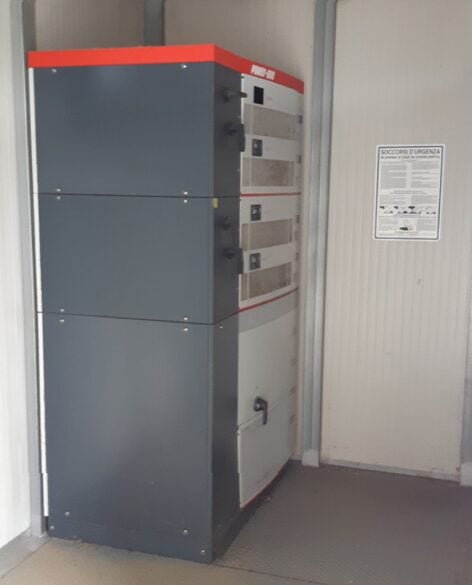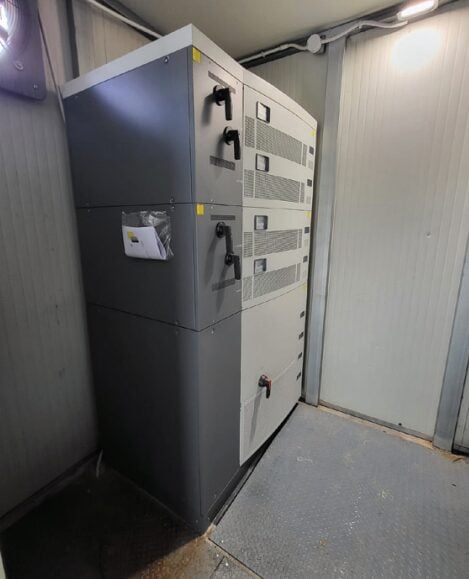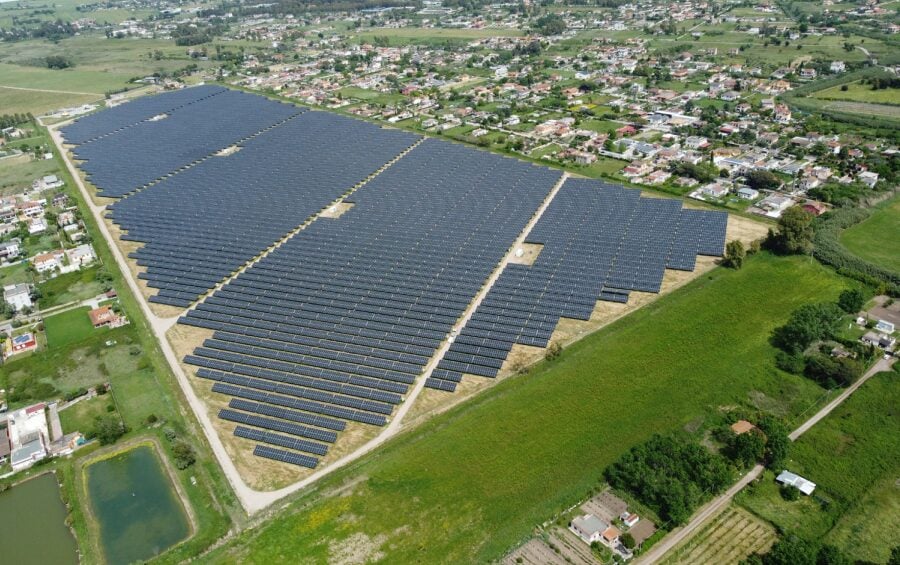At the same time, technology and innovation have evolved rapidly alongside solar, and new solutions have emerged since the initial boom. This presents opportunities to upgrade maturing systems and replace older technologies to drive efficiencies, reduce costs, extend asset lifespan and optimise renewable energy generation, considering also the rapid evolution of the energy market.
With solar expected to play an ever-greater role in global energy markets, optimising these older assets is essential for maintaining output, improving efficiency and ensuring continued financial viability. As a long-term partner and provider of renewable energy, our dedicated operations team is focused on the optimisation of our +3GW operating portfolio, to increase efficiencies and performance, minimise supply disruption and enable competitive pricing.
This has been achieved through initiatives such as our panel and inverter replacement strategies, driving higher energy yields and lower operations costs for in excess of 200MW so far; large wind corrective reporting, ensuring accurate quantification and assessment of available renewable energy resources; and importantly, our digitalisation strategy – with artificial intelligence being a key aspect of this.
But what exactly is an aged asset? As a general definition, it refers to equipment that has outlived its usefulness and requires an update. And what does it mean from a practical point of view? And how do operators manage assets which are coming towards the end of their lifespan?
Let’s look at a few key strategies.
The three Rs: revamping, retrofitting or repowering
Revamping, repowering and retrofitting are the primary options available to mitigate any reductions in a plant’s performance.
Revamping is a process through which key components, typically inverters and modules are replaced to restore the plant to its original intended total installed capacity. Retrofitting is a specific type of revamp, usually driven by regulatory changes, to bring a plant up to date with new regulatory requirements or to fix specific issues. Repowering goes one step further, replacing components with advanced new technologies, to boost the capacity beyond the project’s original total installed capacity.
The market for repowering and revamping solar assets is growing rapidly, especially in Europe, where many plants are reaching the end of their initial operational lifespans. According to recent reports, the global market for repowering activities could reach up to 30GW of capacity by 2030.
A step-by-step guide to assessing an asset’s performance
How do asset owners and managers know exactly when to implement a revamp, retrofit or repower? And how do they get ahead of the curve to identify potential problems before they arise?
Accurately assessing whether an asset’s performance has declined is key to determining whether a system requires an upgrade or replacement.
Step one. An assessment of the history and current status of the asset is the first priority. Conducting a thorough review of performance data, operation reports and maintenance records can help to identify patterns of degradation. This includes monitoring how systems have operated over time and identifying potential issues related to material degradation, efficiency loss, or increased failure rates.
It is also important to check for symptoms of ageing, such as corrosion, efficiency loss and increased fault rates. These symptoms often indicate that components have reached or are approaching the end of their functional life. As part of the assessment, a life extension evaluation and GAP analysis should be carried out, to analyse the current state of the system versus its original design to identify gaps in lifespan and performance.
Step two. Once all of the issues have been identified, the next step is to determine the modifications required to extend the system’s life, such as replacing inverters, adding storage systems to improve and stabilise revenues, or implementing new technologies. You will also need to prepare for future obsolescence by considering how emerging technologies will impact the system’s performance and life expectancy.
Step three. The third step is to conduct a comprehensive analysis to predict the long-term costs, taking into account replacement and operational costs, as well as potential revenue generation. The decision making process should include a thorough cost-benefit analysis, considering factors such as improved efficiency, extended lifespan and potential regulatory incentives. Ensuring a risk-based approach is followed, prioritising critical systems and equipment based on risk analysis, will help identify and address high-risk components to help avoid catastrophic system failures.
What next? The conclusions from this assessment will help to inform the best course of action, weighing up the cost of continuing to operate with current systems against the expected outcomes of a revamp, retrofit or repower.
Repairs beyond warranty

As well as a comprehensive assessment, regular routine checks should be conducted throughout an asset’s lifespan to identify and replace faulty or degraded components such as inverters, modules and wiring to ensure optimal performance.
However, solar assets typically come with a warranty of between ten and 20 years, which means that managers must plan ahead to ensure that they can implement repairs when an asset first shows signs of reduced performance, even after the warranty has expired. Budgeting for these expenses ensures that operators can support the extension of the asset lifespan for as long as is reasonably possible.

equipment
offers
opportunities for
improving asset
performance Image: Sonnedix.
As an asset approaches the end of its warranty, operators should look to renegotiate contractual arrangements, ideally securing extensions or new service agreements. If this is not possible, a thorough inspection of the asset should be carried out prior to the end of the warranty to assess the condition of components and identify any issues that must be addressed. This allows the operator to plan for necessary repairs and to file any claims prior to the end of the warranty. At this stage, it is also important to conduct detailed risk assessments, including evaluating the condition of components and the likelihood of failure to identify potential risks associated with ageing assets, and develop mitigation strategies.
Influence of original design on feasibility of upgrades
The original design of a solar plant has a significant influence on the feasibility and cost of potential upgrades. While technological advancements are constantly evolving and offering new solutions to enhance the performance of ageing solar assets, it is important to fully assess the potential limitations created by the original design, to ensure it is feasible to implement the intended upgrades.
Issues to watch out for include:
- Available space and existing infrastructure. In some cases, upgrades such as adding new tracking systems or bifacial modules may not be possible without significant and costly changes to the plant’s layout.
- Structural design. A common issue for older plants, where the original design may not accommodate the latest types of PV modules or may not allow for easy maintenance access, which is vital for long-term operation.
- System design. Mismatched components or improper electrical configurations can cause energy losses and hinder performance over time. The integration of new technologies or components may be restricted if the original design was not optimised for flexibility.
Enhancing performance with new technologies
While there are certainly limitations to take into account, technological advancements offer numerous opportunities for enhancing the performance of ageing solar assets. Given the importance of monitoring to optimise asset performance, operators should consider installing advanced monitoring systems which offer real-time monitoring and analytics. By integrating advanced sensors, digital tools and AI-based analytics, plant operators can detect issues early, optimise energy generation, enhance productivity through automation and ensure better uptime.
Additionally, upgrading to more efficient inverters, bifacial modules, or adding tracking systems can also significantly enhance performance. These upgrades can increase energy generation and improve system efficiency, leading to higher returns on investment.
Finally, hybridising your portfolio through the addition of energy storage solutions such as batteries can offer highly beneficial returns by helping to balance supply and demand, enhancing reliability and increasing grid stability. Battery storage also helps optimise the use of renewable energy by storing excess power for later use, smoothing intermittency and stabilising grids.
Investment in hybridisation is a core pillar within Sonnedix’s customer-oriented business strategy, as it increases the reliability and efficiency of energy produced while also driving down customer costs. Hybridisation can also be supported by AI and digitalisation, automatically optimising processes for predicting when certain failures might occur to allow preventative maintenance to take place.
Keeping abreast of technological changes
To effectively manage ageing solar assets, it is crucial to stay informed about technological advancements, including innovations in PV modules, inverters, energy storage and grid integration.
Operators must remain flexible and agile, with a willingness to develop strategies that allow for easy adaptation to new technologies and mitigate the risk of obsolescence. Collaboration is also key, through engagement with industry experts, attending conferences and participating in professional networks to remain informed and share insights about best practices.

Potential pitfalls
While upgrading ageing solar assets offers many benefits, there are also potential risks to evaluate before taking action. The first consideration is technical risks, as integrating new components may lead to compatibility issues. New technologies may also introduce unforeseen technical challenges, such as increased downtime during installation or the need for more extensive training for staff. Linked to this, economic risks, including high upfront costs, are a major concern for many plant operators. Ensuring a positive return on investment requires careful planning and cost-benefit analysis.
Finally, it is also vital to ensure that new upgrades or system configurations are compliant with current regulatory standards and to try to anticipate future regulatory requirements to reduce the risk of requiring further changes later down the line, which can bring significant costs and complications.
Care and maintenance
Today, with technology and processes advancing at pace, plants can last for upwards of 30 or 40 years, and while the above methods for assessing and upgrading plants are critical to ensure efficient and maximum production, operators must ensure that assets can operate for as long as possible before requiring these strategies.
Proper care and maintenance of plants throughout their lifespan is paramount, and implementing a preventive maintenance schedule is essential to address potential issues before they become major problems. This includes regular cleaning, tightening connections and checking for signs of wear and tear or reduced performance. Particular attention must be given to the PV module, which has been found to be most common cause of operational failures. However, all plants should undergo regular and thorough inspections and services to identify and swiftly deal with any potential issues.
Setting up for success
The renewable energy sector has rightly focused on deploying new capacity, but optimising existing assets offers one of the most immediate and cost-effective ways to accelerate the transition to a low-carbon future.
It is important to draw upon expertise and data available to make informed decisions, and to collaborate across the industry to pool knowledge of ageing assets and identify the best strategies for repair and maintenance. As technology continues to advance and evolve, energy producers should also utilise the intelligence offered by real-time data and analytics to monitor system performance and make informed decisions about maintenance and repairs.
By adopting the right strategies, including business models for revamping, assessing the influence of original design, leveraging new technologies and staying updated on industry trends, operators can enhance the longevity and efficiency of their solar assets while maximising returns and maintaining sustainable energy production.
Authors
Marco Zaniboni is the regional head of operations in Europe at Sonnedix, a leading global renewable energy provider with over 11GW of global capacity in ten countries. With over 20 years of experience in the renewable and traditional energy sectors, Marco is responsible for overseeing the operational and technical controls required to support the continued growth of Sonnedix’s presence in Europe, ensuring operational efficiency to deliver the optimal financial performance.
Juan Fernandez (Juanma) is the chief operating officer at Sonnedix, where he oversees the overall performance of the company’s operating portfolio from an operational, asset management and commercial perspective. Juanma has over 20 years of experience in the renewable energy sector, spanning PV component technology, through renewable asset operational optimisation to effective technical and commercial asset management. He is also on the SolarPower Europe board of directors.











